- Diff mode toggle - Allows you to compare eval runs to each other. If you select the toggle, you will see the results of your current eval compared to the results of the baseline.
- Filter bar - Allows you to focus in on a subset of test cases. You can filter by typing natural language or BTQL.
- Column visibility - Allows you to toggle column visibility. You can also order columns by regressions to hone in on problematic areas.
- Table - Shows the data for every test case in your eval run.
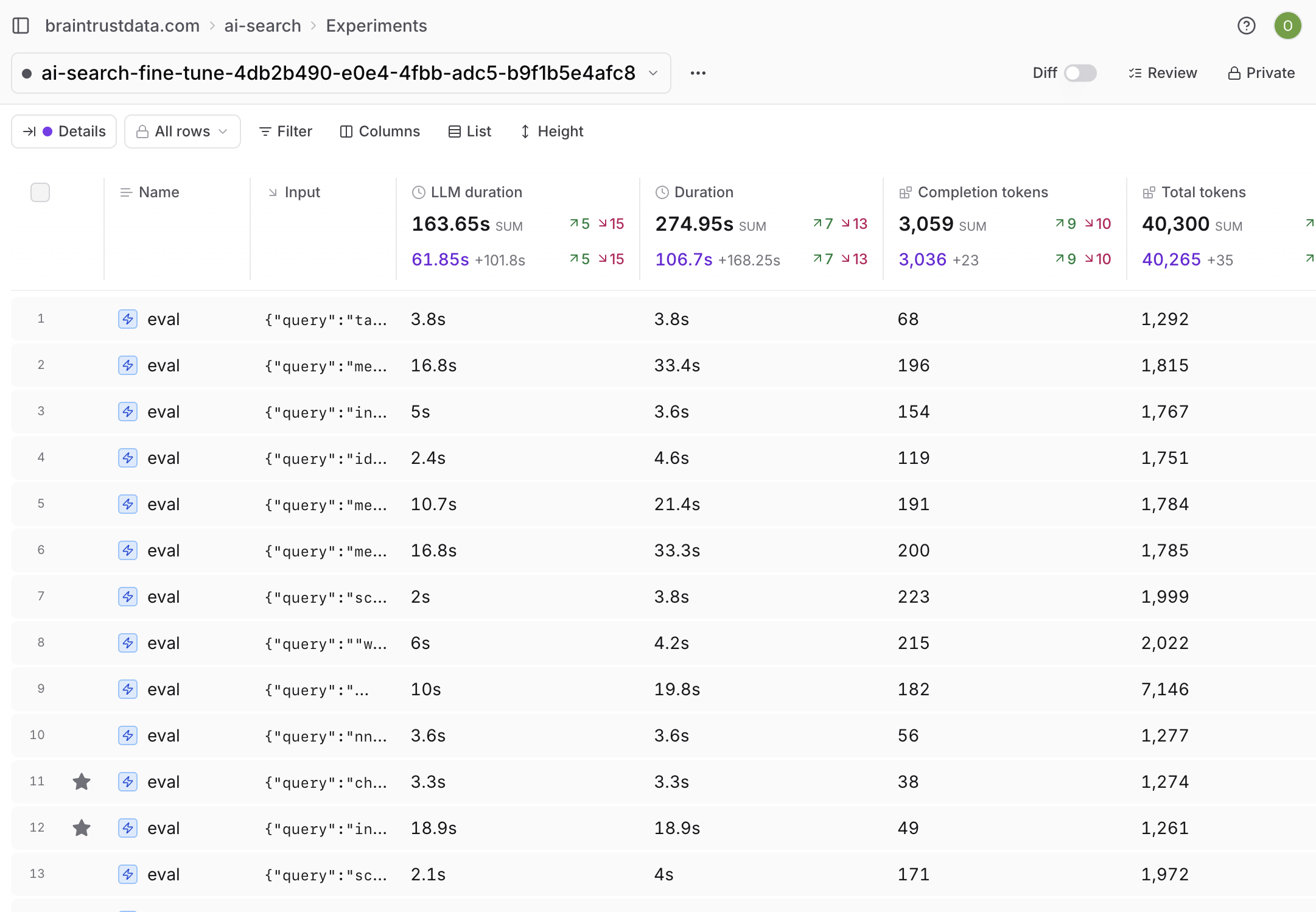
Experiment summaries
When you select an experiment, you’ll get a summary of the comparisons, scorers, datasets, and metadata.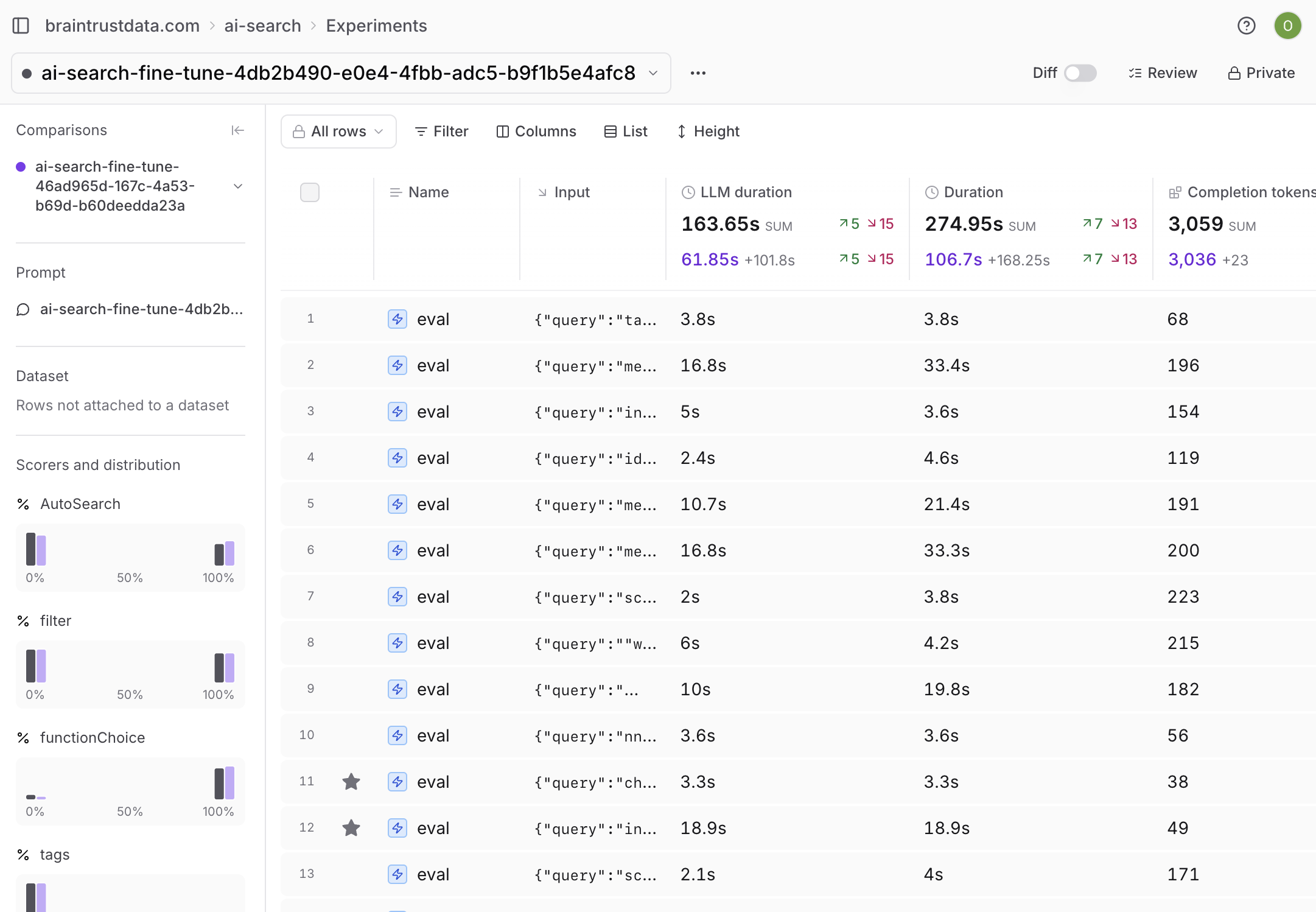
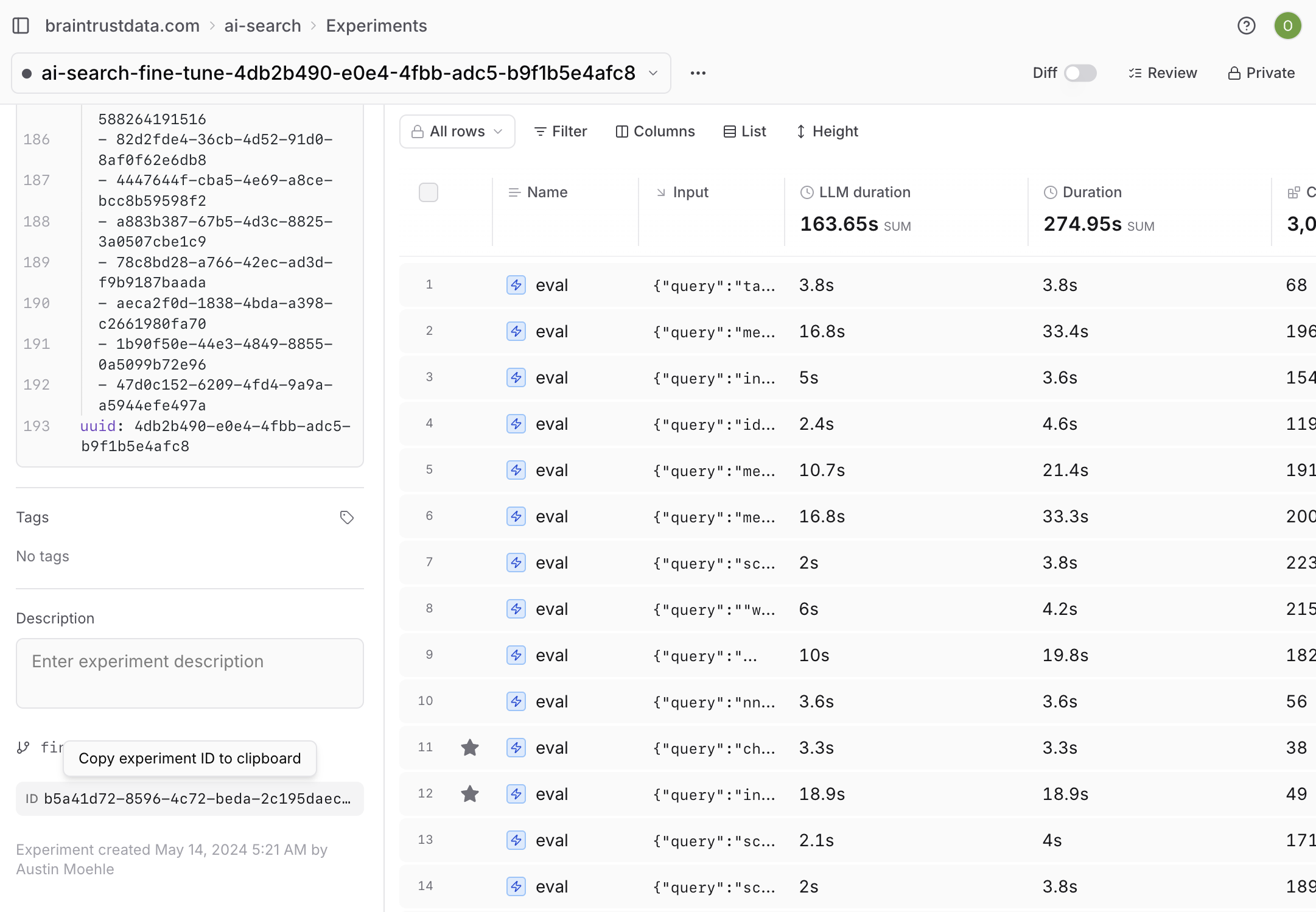
Table header summaries
Summaries will appear for score and metric columns. To find test cases to focus on, use column header summaries to filter by improvements or regressions (test cases that decreased in score). This allows you to see the scorers with the biggest issues. You can also group the table to view summaries across metadata fields or inputs. For example, if you use separate datasets for distinct types of usecases, you can group by dataset to see which usecases are having the biggest issues.Group summaries
By default, group rows will show one experiment’s summary data, and you can switch between them by selecting your desired aggregation.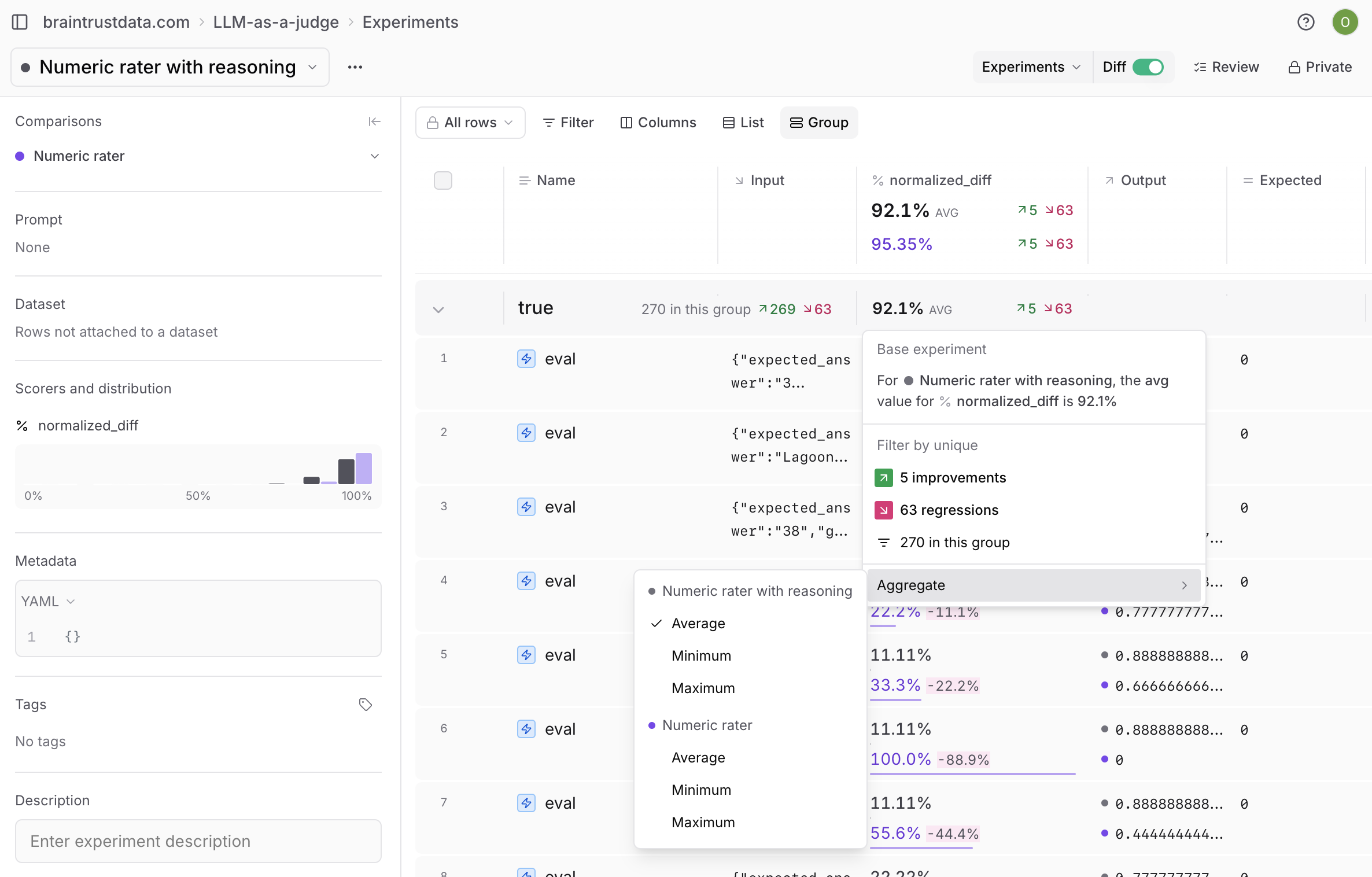
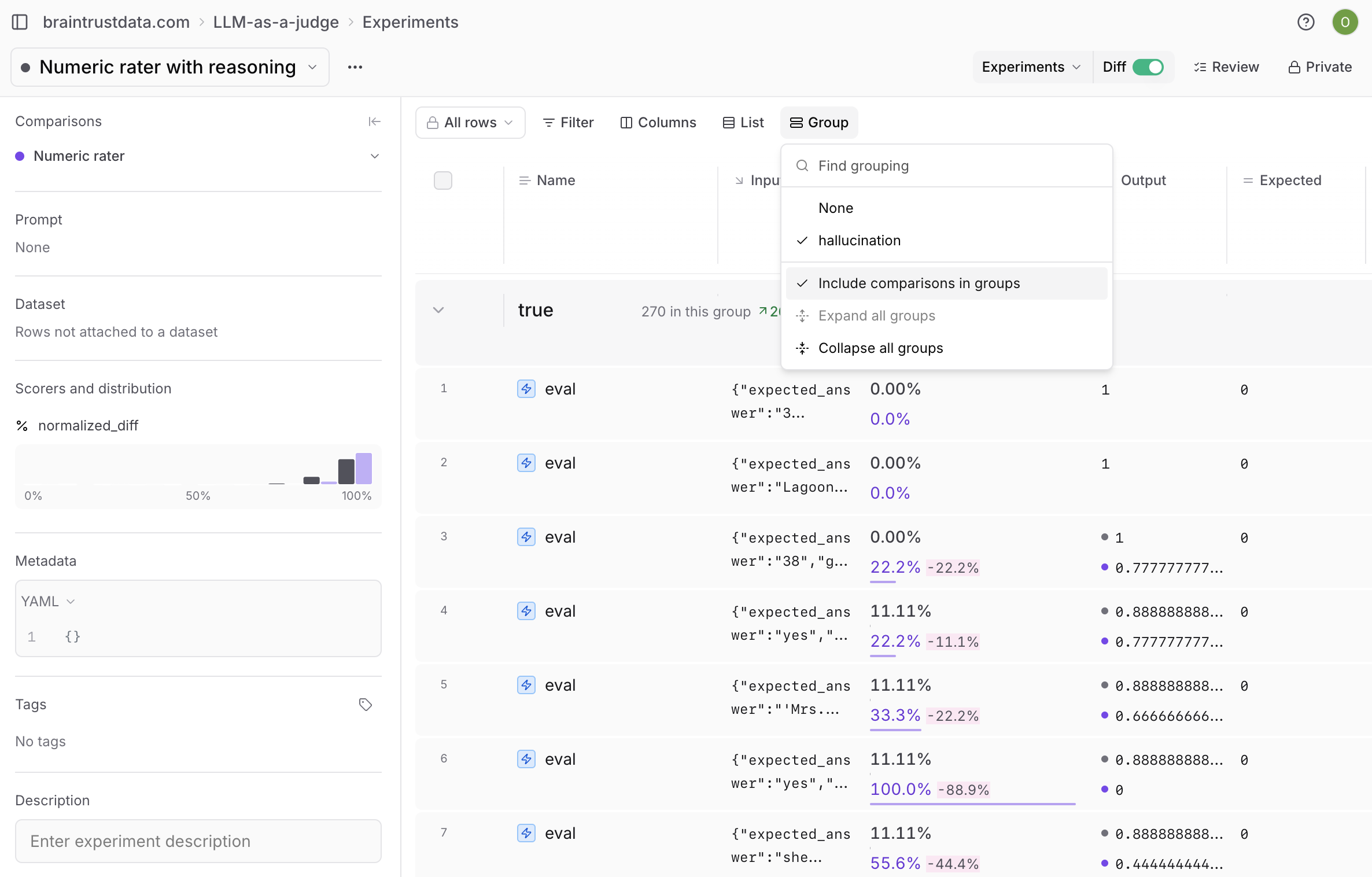
Trace view
Selecting a row will open the trace view. Here you can see all of the data for the trace for this test case, including input, output, metadata, and metrics for each span inside the trace. Look at the scores and the output and decide whether the scores seem “right”. Do good scores correspond to a good output? If not, you’ll want to improve your evals by updating scorers or test cases.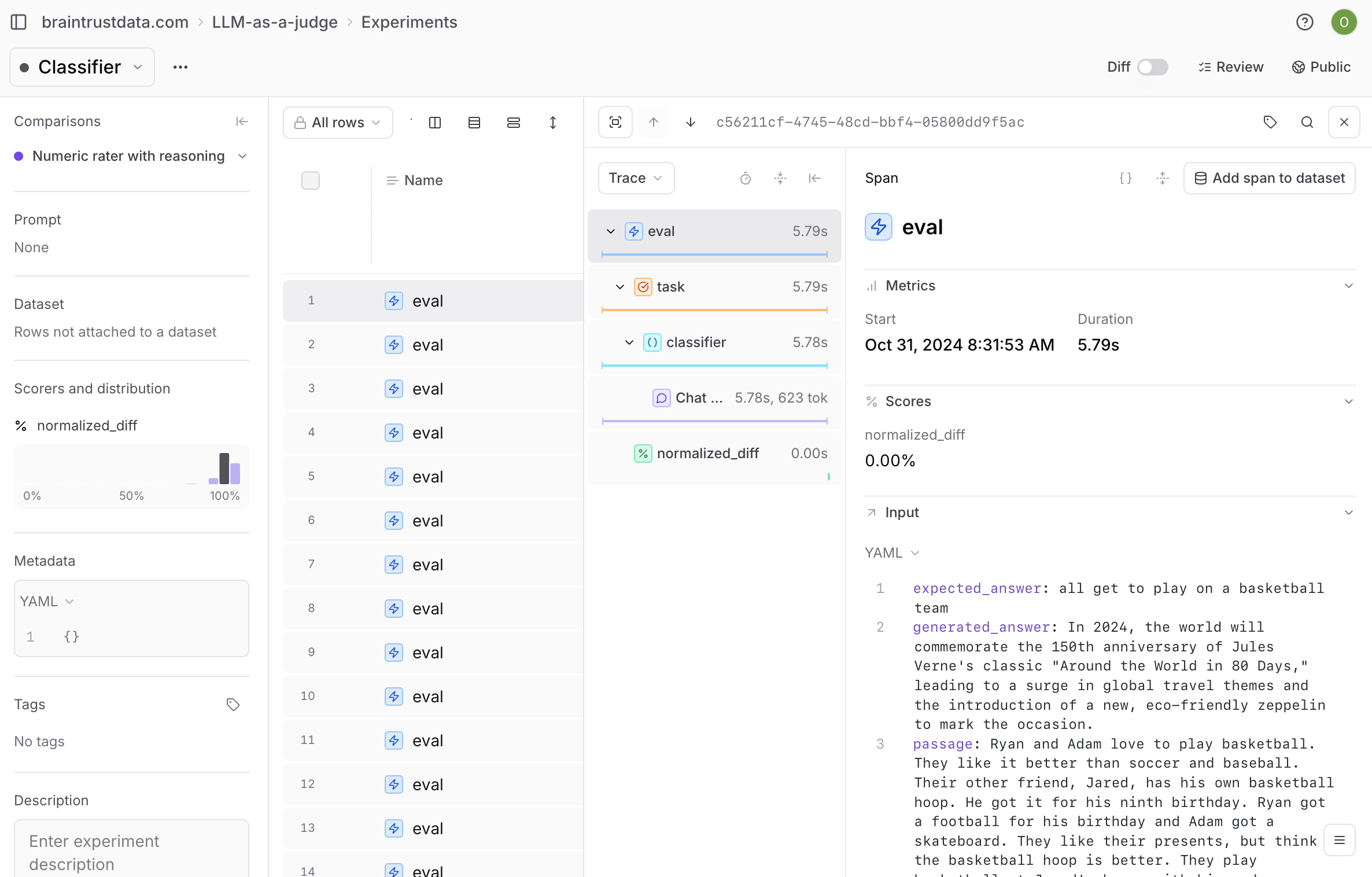
Create custom columns
You can create custom columns to extract values from the root span. To do this, use the Add custom column option at the bottom of the Columns dropdown or select the + icon at the end of the table headers.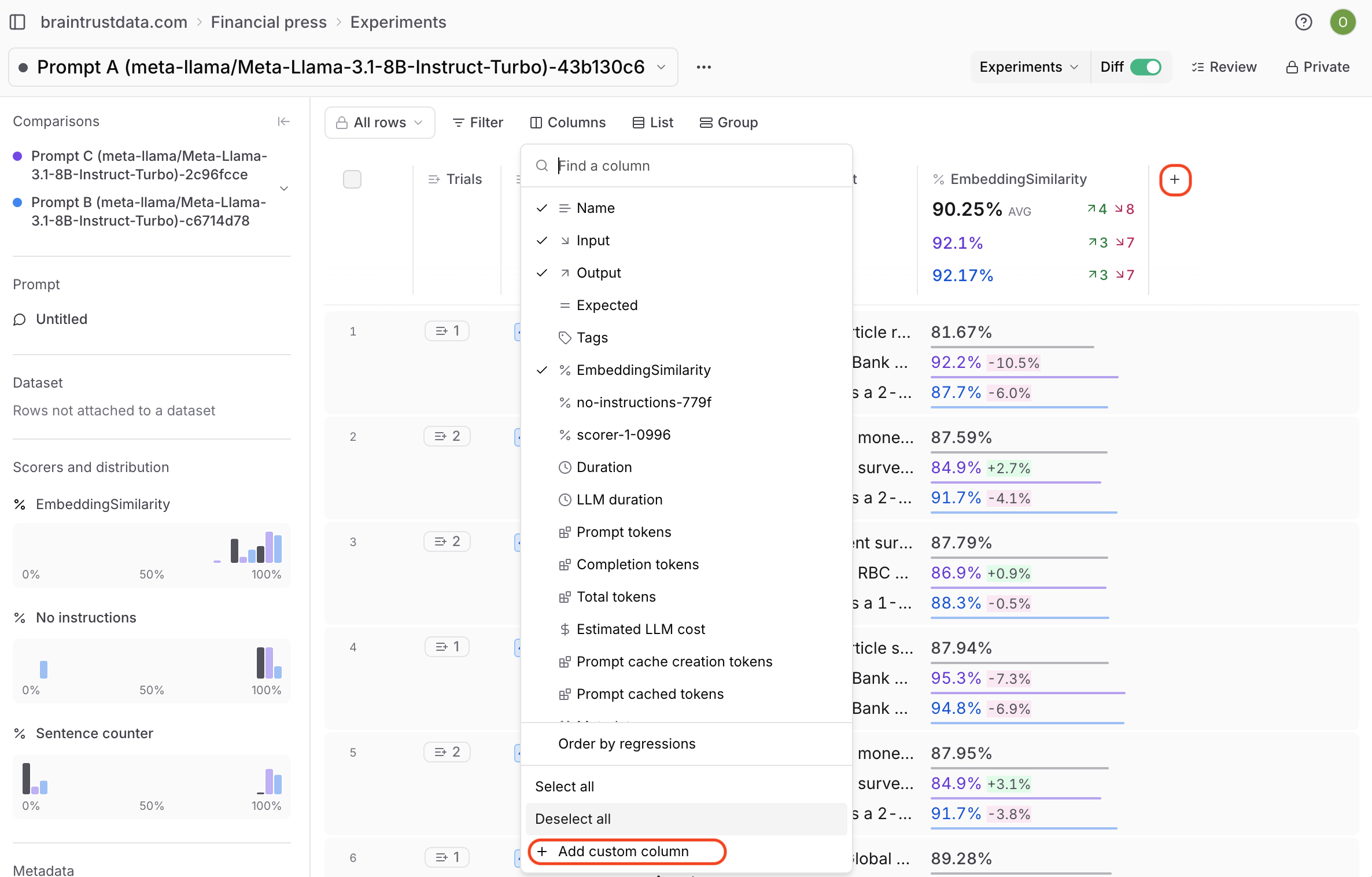
Score experiments
You can manually apply scorers to test cases in your experiments. When applied, scores show up as additional spans within the trace for a test case. There are two ways to manually score test cases.- Multiple test cases: Select the rows of an experiment you’d like to score, then select Score to apply the chosen scorers.
- Single test case: Select any row of an experiment and use the Score button in the trace view to apply scorers to that specific test case.
Interpret results
How metrics are calculated
Along with the scores you track, Braintrust tracks a number of metrics about your LLM calls that help you assess and understand performance. For example, if you’re trying to figure out why the average duration increased substantially when you change a model, it’s useful to look at both duration and token metrics to diagnose the underlying issue. Wherever possible, metrics are computed on thetask subspan, so that LLM-as-a-judge calls are excluded. Specifically:
Durationis the duration of the"task"span.Offsetis the time elapsed since the trace start time.Prompt tokens,Completion tokens,Total tokens,LLM duration, andEstimated LLM costare averaged over every span that is not marked withspan_attributes.purpose = "scorer", which is set automatically in autoevals.
To compute LLM metrics (like token counts), make sure you wrap your LLM calls.
Diff mode
When you run multiple experiments, Braintrust will automatically compare the results of experiments to each other. This allows you to quickly see which test cases improved or regressed across experiments. You can also select any individual row in an experiment to see diffs for each field in a span.How rows are matched
By default, Braintrust considers two test cases to be the same if they have the sameinput field. This is used both to match test cases across experiments
and to bucket equivalent cases together in a trial.
View data across trials
To group by trials, or multiple rows with the sameinput value, select Input from the Group dropdown menu.
This will consolidate each trial for a given input and display aggregate data, showing comparisons for each unique input across all experiments.
If Braintrust detects that any rows have the same input value within the same experiment, diff mode will show a Trials column where you can select matching trials in your comparison experiments.
You can also step through the relevant trial rows in your comparison experiment by selecting a specific trace.
Customize the comparison key
However, sometimes yourinput may include additional data, and you need to use a different
expression to match test cases. You can configure the comparison key in your project’s Configuration page.

Experiment view layouts
Grid layout
When you run multiple experiments, you can also compare experiment outputs side-by-side in the table by selecting the Grid layout. In the grid layout, select which fields to display in cells by selecting from the Fields dropdown menu.Summary layout
The Summary layout summarizes scores and metrics across the base experiment and all comparison experiments, in a reporting-friendly format with large type. Both summary and grid layouts respect all view filters.Aggregate (weighted) scores
It’s often useful to compute many, even hundreds, of scores in your experiments, but when reporting on an experiment, or comparing experiments over time, it’s often useful to have a single score that represents the experiment as a whole. Braintrust allows you to do this with aggregate scores, which are formulas that combine multiple scores. To create an aggregate score, go to your project’s Configuration page, and select Add aggregate score.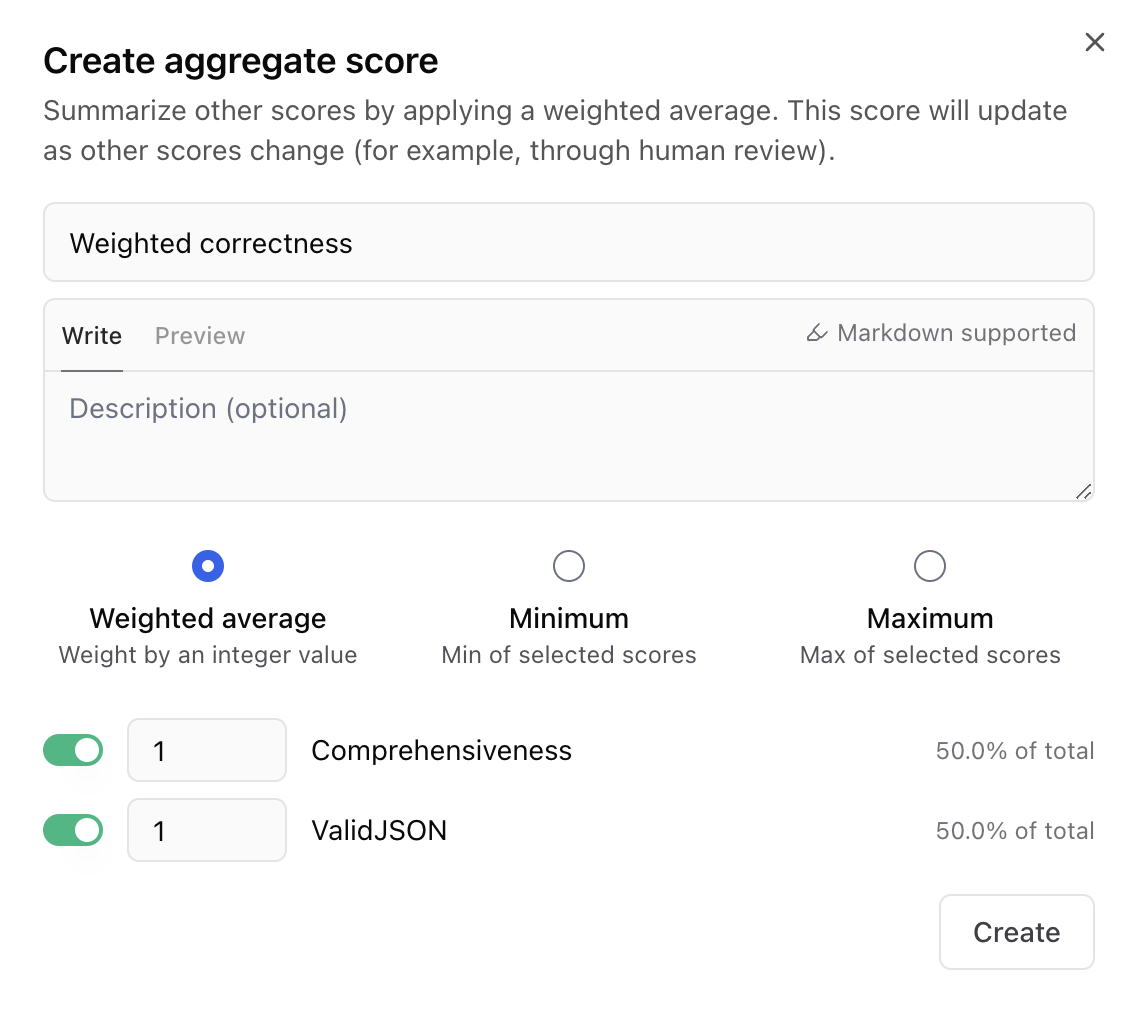
- Weighted average - A weighted average of selected scores.
- Minimum - The minimum value among the selected scores.
- Maximum - The maximum value among the selected scores.
Analyze across experiments
Braintrust allows you to analyze data across experiments to, for example, compare the performance of different models.Bar chart
On the Experiments page, you can view your scores as a bar chart by selecting Score comparison from the X axis selector: You can also select the metadata fields you want to group by to create bar charts:Scatter plot
Select a metric on the x-axis to construct a scatter plot. Here’s an example comparing the relationship between accuracy and duration.Export experiments
UI
To export an experiment’s results, open the menu next to the experiment name. You can export asCSV or JSON, and choose if you’d like to download all fields.
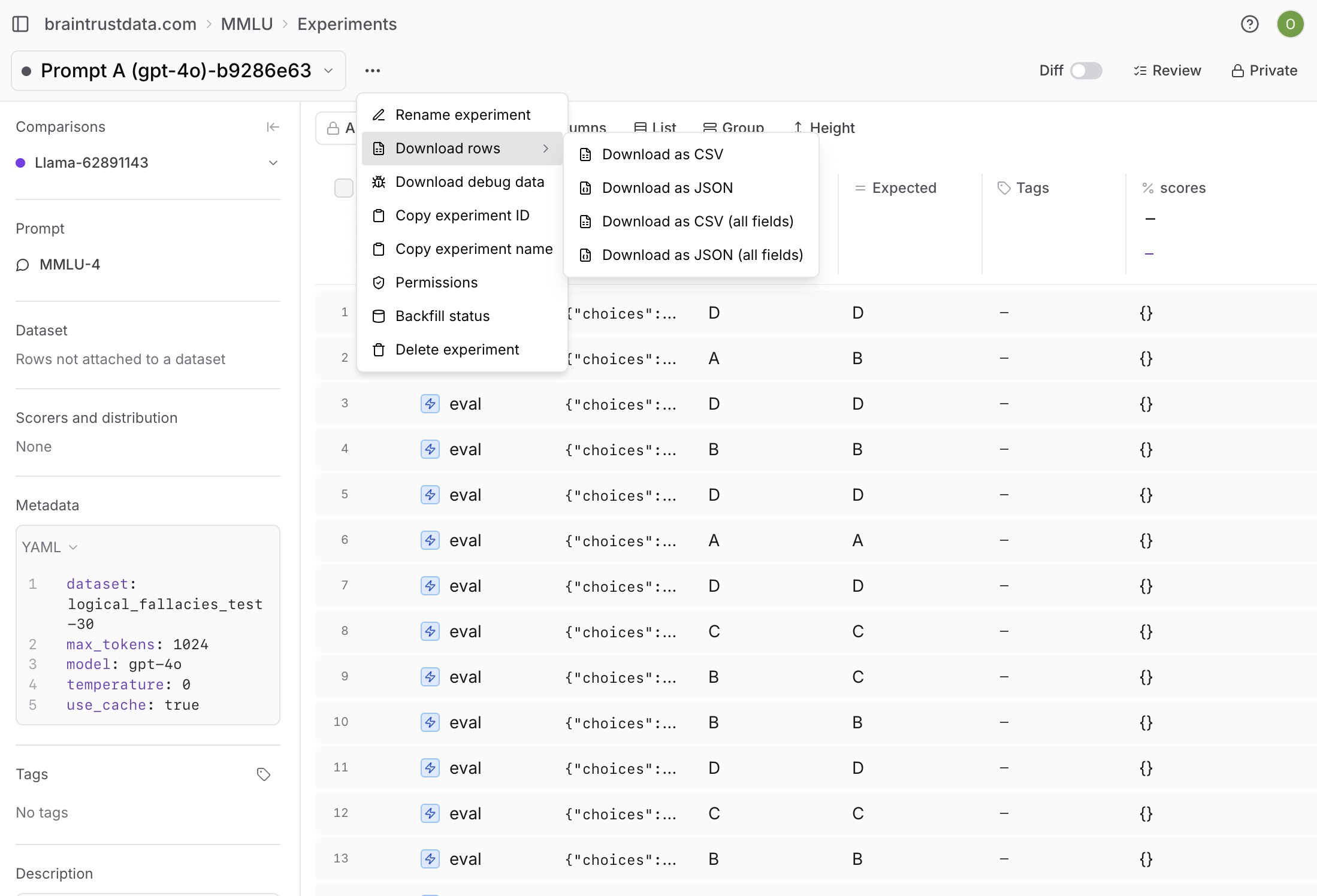
API
To fetch the events in an experiment via the API, see Fetch experiment (POST form) or Fetch experiment (GET form).SDK
If you need to access the data from a previous experiment, you can pass theopen flag into
init() and then just iterate through the experiment object:
asDataset()/as_dataset() function to automatically convert the experiment into the same
fields you’d use in a dataset (input, expected, and metadata).